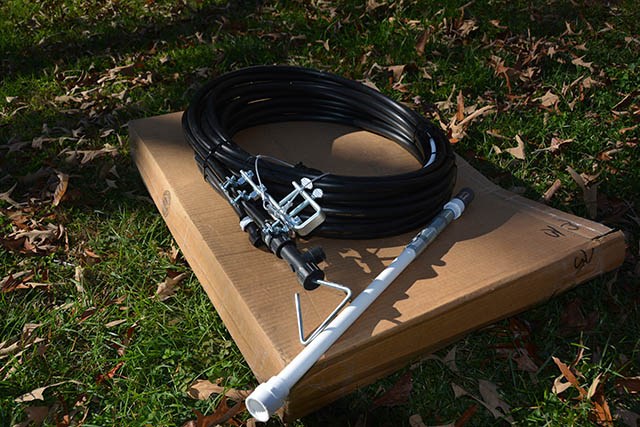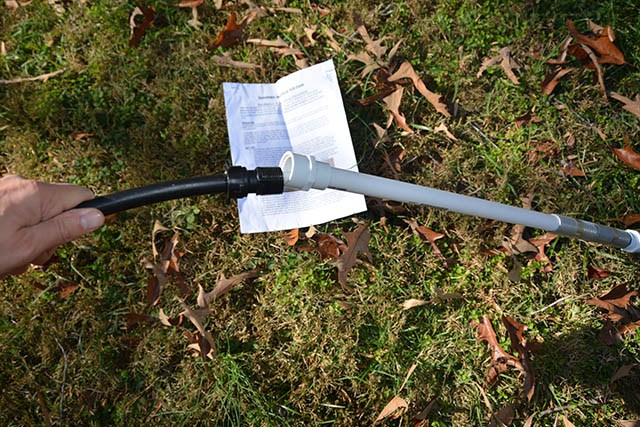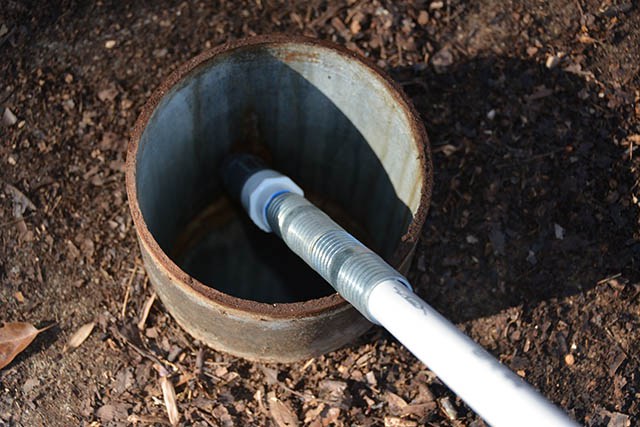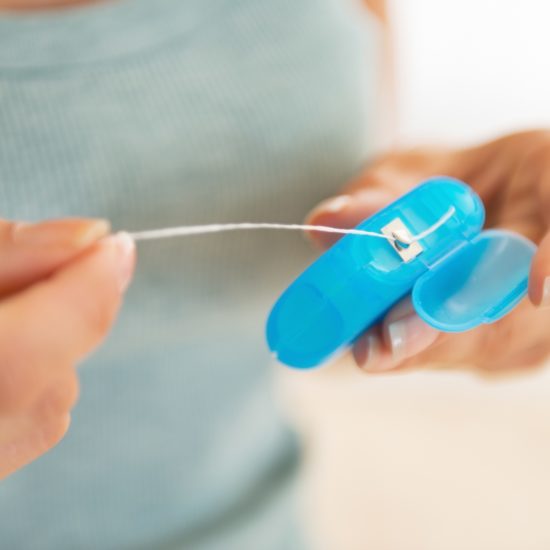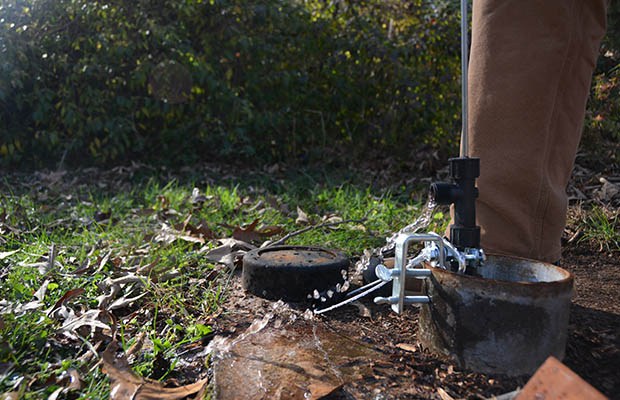
As part of my preps, water is high on the list of items I strive to ensure I have options and redundancy for. We have water stored in our home and rain barrels that can hold hundreds of gallons as well as a fairly large pond directly across the street from our house. But in addition to all of those potential sources there was one more that I hadn’t tapped into for years that I had been meaning to find a solution for.
We have a well on our property that hasn’t been used in at least 20 years. When we moved into our home it was already there, a small nub in the back yard surrounded by a little concrete pad and the remnants of electrical wiring. It had not been hooked up to a pump since before the people we purchased the home from had lived there. It was a potential source of water with no easy way of collection but we have always talked about using it to water the garden or supply additional water needs if our city water was shut off.
For years my wife and I had discussed the prospect of getting that well working for us from time to time but never did anything. Thinking of this resource from a strategic standpoint, I had always viewed this as a backup source if all hell broke loose and just hoped that I would find some creative way of making a bucket system with a pulley and of course finding clean water at the bottom of the hole if I ever needed it.
What are you one of those Preppers?
At one point I called a local well pump service man and asked him how much he would charge me to stick a manual hand pump in there like the kind you see on old movies or in Lehman’s catalog thinking that would be a great option. The first words out of the man’s mouth was, “What are you, one of those preppers?” and after I tried to convince him that I just wanted options for my well he started talking about how expensive they are (around 1K) and how everyone rushed to get those installed before Y2K and how everyone was crazy. He told me he could show me a simple tripod and bucket idea that would save a ton of money but never called back. I guess he didn’t want to fool with me.
So the well sat until recently and Gunslinger contacted me about performing a review of his manual well pump solution. The Gunslinger Quick-Draw Emergency Hand Well Pump seemed to be perfect for my plans of providing a water option using my long-neglected well. The pump is designed to be deployed when you need it and for a prepper, this seems like a good balance between preparedness and a dedicated, more costly well pump.
The Quick-Draw well pump comes almost ready to go right out of the box.
The Quick-Draw is just about ready to use right out of the box, all you need to do is insert the pump end section onto the bottom of the hose or that is the idea. The instructions provided are very clear and if you want more detail, Gunslinger provides plenty of set up and modification videos on their site.
Simply connect the bottom pump housing onto the hose.
The quick-draw well pump comes in preset lengths of 100′, 75′, 50′ and 25′ and I ordered the 75′ product because I thought my water well went down that far. I assembled the pump which is virtually all plastic pieces except for the brackets that hold the pump firmly to the well shaft housing and dropped it down into my well.
Feed the well pump hose into your well.
I wasn’t able to feed all of the pump hose. It went down fairly smoothly to a point and then some adjusting allowed me to feed it down another 20 feet or so, but I must have reached the bottom because the pump would go no further. Figuring I would just test the well pump without mounting it, I started pulling on the handle.
The handle moved smoothly one time but no more and I could feel the internal pex hose straining against the exterior plastic tubing. The instructions from Gunslinger clearly state that the hose has to be straight so I pulled the hose out completely and followed the simple instructions online for shortening well pump hose. I had to do this twice actually to get the length correct and I could have saved a little time by dropping some type of measuring device down my well. Even with having to shorten the hose, this only took a few minutes each time and was easily done with my trusty knife and a wrench.
Once I had shortened the hose sufficiently and connected the well pump to the well pipe for security again, the pump handle slid up and down very easily. It took me about 30-40 pumps to start pulling that water out of the ground. Pumping was simple and my daughter was with me monitoring the whole process so she could install the well pump if needed. Now that my pump hose is the correct length, really all that needs to be done is to connect the bottom piece, feed the hose down into the well, secure the pump with the clamp and start pumping. Simple.
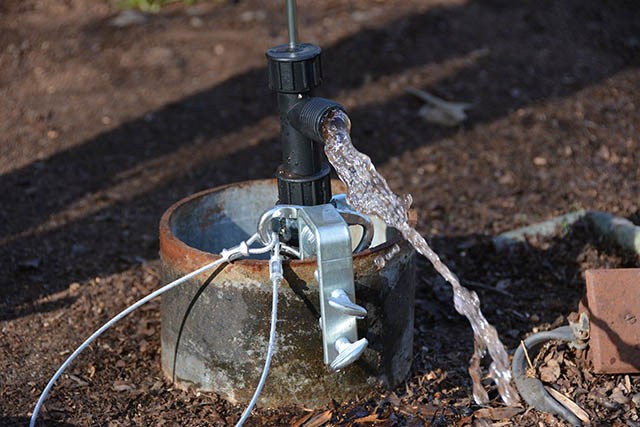
Grid-down water pumping goodness!
The quick-draw doesn’t pull gallons of water out with each stroke of the pump, but it does a reasonable job and I can see this filling a gallon easily in close to a minute. For me, this is a perfect balance for prepping needs and I have capacity that I can store in my shed until I need it. Next, I need to have my water tested.
The Gunslinger Quick-Draw Emergency Hand Well Pump in 50′ length costs $280 and shipping is included in that price. Steel well pumps are 3 times that price and require some installation. Similar type of plastic well pumps I have looked at like Flojack and Earthstraw are easily double and sometimes triple the price of the Gunslinger and I would assume they have a similar set up and performance.
I think the Gunslinger well pump is an impressive piece of survival gear for the money and think this makes a compelling product worth considering if you have a well on your property and you are looking for a manual backup option for your water needs. Assuming my water is safe, this pump will give me the ability to provide water for my family regardless of the situation.


